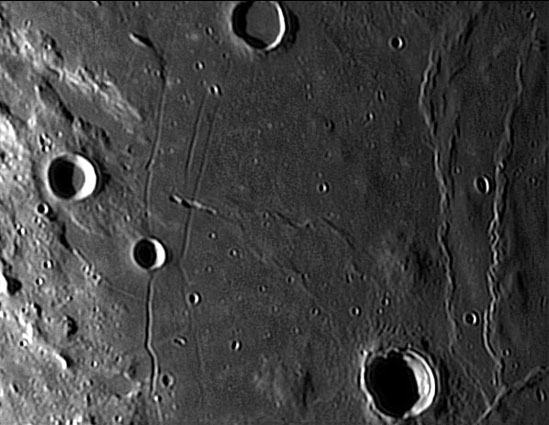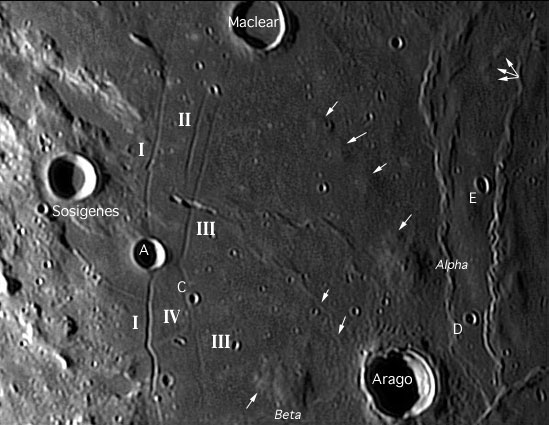Difference between revisions of "October 20, 2004"
| (13 intermediate revisions by the same user not shown) | |||
| Line 1: | Line 1: | ||
__NOTOC__ | __NOTOC__ | ||
=Rough Domes= | =Rough Domes= | ||
| + | <!-- Start of content --> | ||
<table width="85%" border="0" align="center" cellpadding="6" cellspacing="2"> | <table width="85%" border="0" align="center" cellpadding="6" cellspacing="2"> | ||
<tr> | <tr> | ||
| − | |||
</tr> | </tr> | ||
</table> | </table> | ||
<table width="85%" border="0" align="center" cellpadding="6" cellspacing="2"> | <table width="85%" border="0" align="center" cellpadding="6" cellspacing="2"> | ||
<tr><td colspan="2" valign="top"><div align="center"> | <tr><td colspan="2" valign="top"><div align="center"> | ||
| − | + | <!-- Mouse style 1 --> | |
| − | + | {{HoverImage|LPOD-2004-10-20.jpeg|LPOD-2004-10-20b.jpeg}} | |
| − | |||
| − | |||
</div></td> | </div></td> | ||
</tr> | </tr> | ||
</table> | </table> | ||
<table width="80%" border="0" align="center" cellpadding="8"> | <table width="80%" border="0" align="center" cellpadding="8"> | ||
| − | <tr><td><div align="center" class="main_sm">Image Credit: [mailto:paololazzarotti@astromeccanica.it Paolo Lazzarotti]</p> | + | <tr><td><div align="center" class="main_sm"><p>Image Credit: [mailto:paololazzarotti@astromeccanica.it Paolo Lazzarotti]</p> |
</div></td> | </div></td> | ||
</tr> | </tr> | ||
| Line 23: | Line 21: | ||
<table class="story" border="0" bgcolor="#FFFFFF" width="90%" cellpadding="10" align="center"><tr><td> | <table class="story" border="0" bgcolor="#FFFFFF" width="90%" cellpadding="10" align="center"><tr><td> | ||
<p align="center"><b>Rough Domes</b></p> | <p align="center"><b>Rough Domes</b></p> | ||
| − | <p align="left">The Arago domes are probably the best known compact volcanic piles on the Moon, and because they are relatively large structures, have been [ | + | <p align="left">The Arago domes are probably the best known compact volcanic piles on the Moon, and because they are relatively large structures, have been [[January_12,_2004|imaged]] many times. You might wonder if we can learn anything new from yet another image of the domes and this area, and Paolo's image demonstrates the answer is, "Yes!" The high image scale and resolution of today's LPOD reveal complexities of the Arago Alpha and Beta domes. Arago Beta has a basic round shape with a breeched crater-like depression on its northern side, making the dome look like a beetle with pincers. On the west (left) side of the dome there is another roundish lobe, like a small companion dome (arrowed on mouseover). A similar smaller dome (arrow) occurs on the north side of Arago Alpha, but slightly further away so it looks more like a separate structure. Alpha also is seen to have two tiny but steep peaks near its center and an elongated depression extends northward from the brightest peak. Between Arago Alpha and the crater Maclear are three domes of about the same size as the domes next to Alpha and Beta, and in the NE corner of the image are three smaller features (arrows) that also appear to be domes. It is interesting that all of the domes in this area look somewhat similar to each other, but different from the classical hemispherical, pitted domes near [[March_26,_2004|Hortensius]] and elsewhere on the Moon. These SW Tranquillitatis domes have formed in basalts of relatively high TiO2 abundance (7.5-10%) - perhaps dome morphology is related to basalt types. Finally, there is a broad and long ridge between Arago D and E that would be called a dome if it were not so elongated. This image also nicely shows the Sosigenes rilles and a smaller one NW of Arago that I hadn't seen before. Large image scale, high resolution and low sun seem to be the keys for discovering new features on the maria.</p> |
| − | <blockquote><p align="right">— [mailto:tychocrater@yahoo.com Chuck Wood]</blockquote> | + | <blockquote> |
| − | <p align="left" | + | <p align="right">— [mailto:tychocrater@yahoo.com Chuck Wood]</p></blockquote> |
| + | <p align="left"><b>Technical Details:</b><br> | ||
Oct 4, 2004, 03:21 UT. Planewton DL-252 telescope (10") + Lumenera LU075M camera, 400 of 4450 frames selected from 150 seconds of AVI @1/30 sec exposure and 30 fps.</p> | Oct 4, 2004, 03:21 UT. Planewton DL-252 telescope (10") + Lumenera LU075M camera, 400 of 4450 frames selected from 150 seconds of AVI @1/30 sec exposure and 30 fps.</p> | ||
<p><b>Related Links:</b><br> | <p><b>Related Links:</b><br> | ||
| Line 31: | Line 30: | ||
<br>[http://www.lpi.usra.edu/research/lunar_orbiter/ima Lunar Orbiter IV View] | <br>[http://www.lpi.usra.edu/research/lunar_orbiter/ima Lunar Orbiter IV View] | ||
<br>Rukl <i>Atlas of the Moon,</i> Sheet 35 | <br>Rukl <i>Atlas of the Moon,</i> Sheet 35 | ||
| − | <p | + | </p> |
| + | <p><b>Yesterday's LPOD:</b> [[October 19, 2004|Rays of Light]] </p> | ||
| + | <p><b>Tomorrow's LPOD:</b> [[October 21, 2004|60 Inches of Tycho]] </p> | ||
</tr> | </tr> | ||
</table> | </table> | ||
| Line 42: | Line 43: | ||
<p align="center" class="main_titles"><b>Author & Editor:</b><br> | <p align="center" class="main_titles"><b>Author & Editor:</b><br> | ||
[mailto:tychocrater@yahoo.com Charles A. Wood]</p> | [mailto:tychocrater@yahoo.com Charles A. Wood]</p> | ||
| − | < | + | <!-- Cleanup of credits --> |
| − | + | <!-- Cleanup of credits --> | |
| − | < | + | <!-- Cleanup of credits --> |
| − | + | <!-- Cleanup of credits --> | |
| − | + | <!-- Cleanup of credits --> | |
| − | < | + | <!-- Cleanup of credits --> |
| − | < | + | <!-- Cleanup of credits --> |
| − | + | <!-- Cleanup of credits --> | |
| − | < | + | <!-- Cleanup of credits --> |
| − | + | <!-- Cleanup of credits --> | |
</td></tr> | </td></tr> | ||
</table> | </table> | ||
<p> </p> | <p> </p> | ||
| − | ---- | + | <!-- End of content --> |
| − | + | {{wiki/ArticleFooter}} | |
| − | |||
Latest revision as of 15:18, 15 March 2015
Rough Domes
Image Credit: Paolo Lazzarotti |
|
Rough Domes The Arago domes are probably the best known compact volcanic piles on the Moon, and because they are relatively large structures, have been imaged many times. You might wonder if we can learn anything new from yet another image of the domes and this area, and Paolo's image demonstrates the answer is, "Yes!" The high image scale and resolution of today's LPOD reveal complexities of the Arago Alpha and Beta domes. Arago Beta has a basic round shape with a breeched crater-like depression on its northern side, making the dome look like a beetle with pincers. On the west (left) side of the dome there is another roundish lobe, like a small companion dome (arrowed on mouseover). A similar smaller dome (arrow) occurs on the north side of Arago Alpha, but slightly further away so it looks more like a separate structure. Alpha also is seen to have two tiny but steep peaks near its center and an elongated depression extends northward from the brightest peak. Between Arago Alpha and the crater Maclear are three domes of about the same size as the domes next to Alpha and Beta, and in the NE corner of the image are three smaller features (arrows) that also appear to be domes. It is interesting that all of the domes in this area look somewhat similar to each other, but different from the classical hemispherical, pitted domes near Hortensius and elsewhere on the Moon. These SW Tranquillitatis domes have formed in basalts of relatively high TiO2 abundance (7.5-10%) - perhaps dome morphology is related to basalt types. Finally, there is a broad and long ridge between Arago D and E that would be called a dome if it were not so elongated. This image also nicely shows the Sosigenes rilles and a smaller one NW of Arago that I hadn't seen before. Large image scale, high resolution and low sun seem to be the keys for discovering new features on the maria. Technical Details: Related Links: Yesterday's LPOD: Rays of Light Tomorrow's LPOD: 60 Inches of Tycho |
|
Author & Editor: |
COMMENTS?
Register, Log in, and join in the comments.





